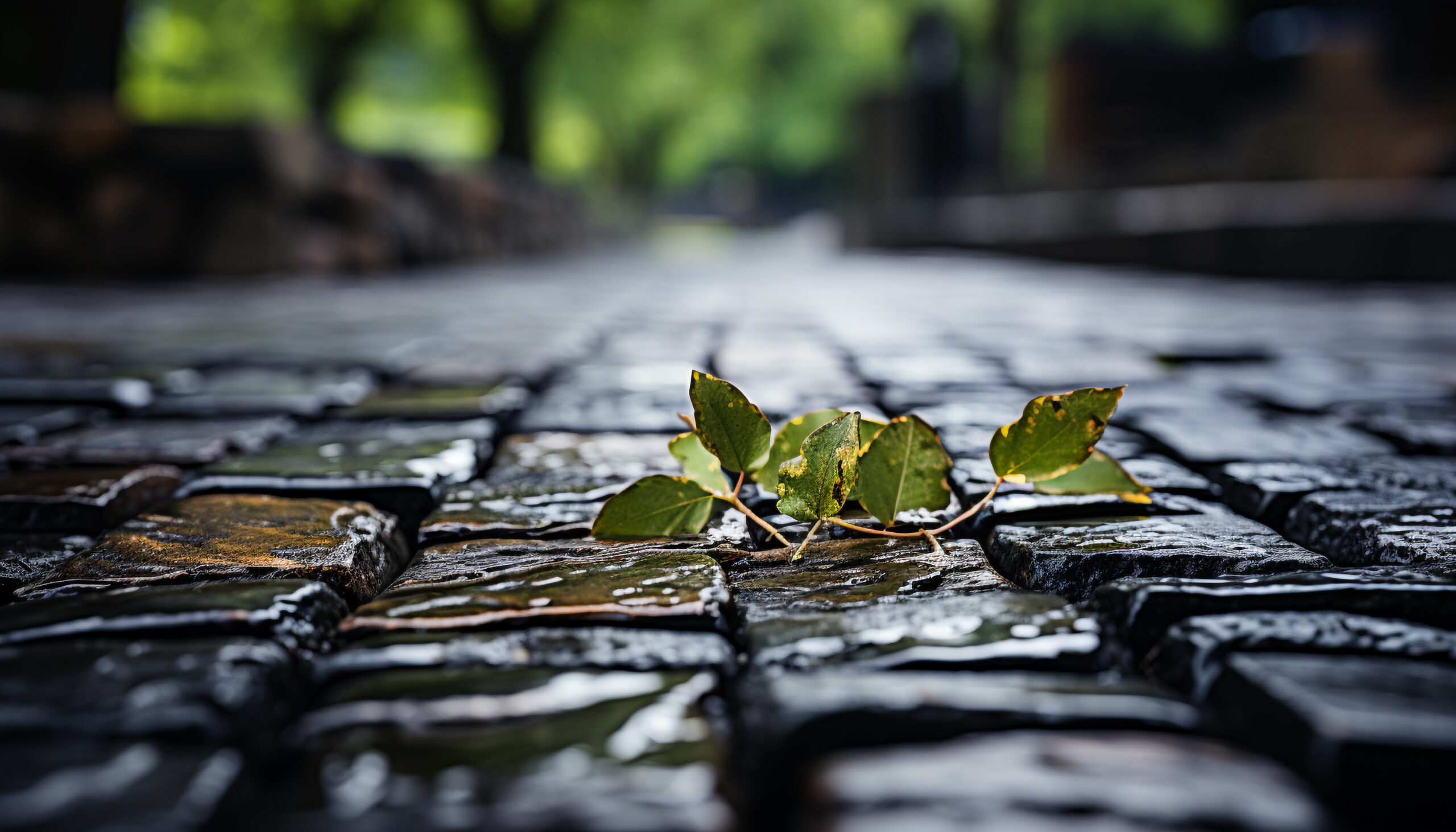Pavers over concrete have become a popular choice for homeowners in areas like Long Island, Queens, and Brooklyn, offering a cost-effective and visually appealing way to enhance outdoor spaces. However, despite their benefits, there are several potential issues associated with this installation method. In this guide, we’ll delve into the primary concerns homeowners may encounter when opting for pavers over concrete.
Common Problems With Pavers
Pavers tend to get in trouble regardless of how beneficial they are. Let’s have a look at these common issues:
Thin Pavers Over Concrete
Thin pavers offer a sleek and modern look when installed over concrete, but they come with their own set of challenges. Thin pavers, typically around 1 inch thick, may lack the durability of thicker alternatives, making them more susceptible to raise and stabilize sunken or cracking or shifting over time. Proper installation techniques, including adequate base preparation and edge restraint, are crucial to mitigate these risks.
Problems with Pavers Over Concrete Slab
Installing pavers over an existing concrete slab can present various issues, particularly if the slab is cracked, uneven, or lacks proper drainage. Without addressing underlying structural issues, such as poor drainage or settlement, pavers may experience premature failure. It’s essential to assess the condition of the concrete slab before proceeding with the installation to avoid potential problems down the line.
Install Pavers Over Concrete with Mortar
While installing pavers over concrete with mortar may seem like a straightforward solution, it can introduce additional complications. Mortar can hinder water drainage, leading to potential moisture-related problems and weakening the bond between the pavers and the concrete substrate. Instead, consider alternative installation methods, such as using a sand or gravel base, to promote proper drainage and ensure a stable foundation for the pavers.
Pavers Over Concrete Drainage
One of the most critical considerations when installing pavers over concrete is drainage. Proper drainage is essential for preventing water buildup, which can damage both the pavers and the underlying concrete substrate. Ensure that the installation incorporates adequate slope and permeable materials to facilitate efficient water runoff and prevent drainage issues.
While pavers over concrete offer an attractive solution for enhancing outdoor spaces, homeowners must be aware of potential problems and take appropriate measures to mitigate risks. By addressing concerns such as drainage, base preparation, and installation methods, homeowners can enjoy a beautiful and durable paver surface for years to come.
Resolving Problems with Pavers Over Concrete
Encountering issues with pavers over concrete can be frustrating, but there are several steps homeowners can take to address and resolve these problems effectively.
- Assess the Situation:
Start by identifying the specific problems you’re experiencing with your pavers over concrete installation. Whether it’s cracking, shifting, drainage issues, or something else, understanding the root cause is essential for finding the right solution.
- Consult with Experts:
If you’re unsure about the severity of the problem or how to fix it, consider consulting with landscaping professionals or contractors specializing in paver installations. They can provide valuable insights and recommend appropriate courses of action based on their expertise and experience.
- Address Drainage Issues:
Poor drainage is a common problem with pavers over concrete and can lead to water pooling, erosion, and damage to the pavers and substrate. Enhancing drainage through proper slope design, installing drainage channels or permeable paver systems, and ensuring adequate base preparation can help alleviate these issues.
- Repair or Replace Damaged Pavers:
If individual pavers are cracked, chipped, or uneven, consider repairing or replacing them as needed. This can help restore the aesthetic appeal and structural integrity of the paver surface while preventing further deterioration.
- Stabilize the Base:
Instability in the underlying base can contribute to paver problems such as shifting or settling. Address any issues with the concrete substrate by repairing cracks, leveling uneven areas, and reinforcing weak spots to create a stable foundation for the pavers.
- Consider Alternative Installation Methods:
Depending on the nature and extent of the problems, you may need to explore alternative installation methods or materials to achieve better results. This could involve removing the existing pavers and starting fresh with a different approach or utilizing specialized products designed to address specific issues.
- Regular Maintenance:
Once the problems with your pavers over concrete have been resolved, it’s crucial to implement a regular maintenance routine to keep the installation in optimal condition. This may include cleaning, sealing, and inspecting the pavers periodically to identify and address any emerging issues before they escalate.
Thin Pavers Over Concrete Reviews
Before embarking on a paver project over concrete, it’s essential to research and read reviews from homeowners who have undergone similar installations. Pay attention to feedback regarding durability, installation challenges, and long-term performance to make informed decisions and anticipate potential issues.
Conclusion
In conclusion, while resolving problems with pavers over concrete may require time, effort, and expertise, it’s essential to take proactive steps to address issues promptly and effectively. If you’re facing significant challenges or are uncertain about the best course of action, don’t hesitate to seek assistance from professionals in the field. Their knowledge and skills can help ensure a successful resolution and restore the beauty and functionality of your paver installation for years to come.
Frequently Asked Questions
Should I Pour Concrete Under Pavers?
No. Pouring concrete under pavers adds unnecessary weight and may exacerbate drainage issues if not properly engineered. While some homeowners may consider pouring a new concrete base under pavers for added stability, this approach is not always necessary and can lead to complications. Instead, focus on ensuring adequate base preparation and proper installation techniques to achieve a long-lasting paver surface.
Can Pavers Be Glued to Concrete?
No dont glue pavers to concrete. While it is technically possible to glue pavers to a concrete surface, this method often leads to issues down the line. One common question among homeowners considering pavers over concrete is whether they can be glued down.
Gluing pavers can inhibit proper drainage, potentially causing water pooling and damage to both the pavers and the concrete substrate. Additionally, glued pavers may not withstand heavy foot traffic or weather conditions as effectively as those installed with traditional methods.
Is it a good idea to put pavers over concrete?
Yes, it can be a good idea to put pavers over concrete, but it depends on factors such as the condition of the concrete, drainage considerations, and proper installation techniques.
Can I lay paving slabs on existing concrete?
Yes, you can lay paving slabs on existing concrete.
What are the disadvantages of concrete paving?
Disadvantages of concrete paving include susceptibility to cracking, limited aesthetic options, and potential difficulty in repairs.


